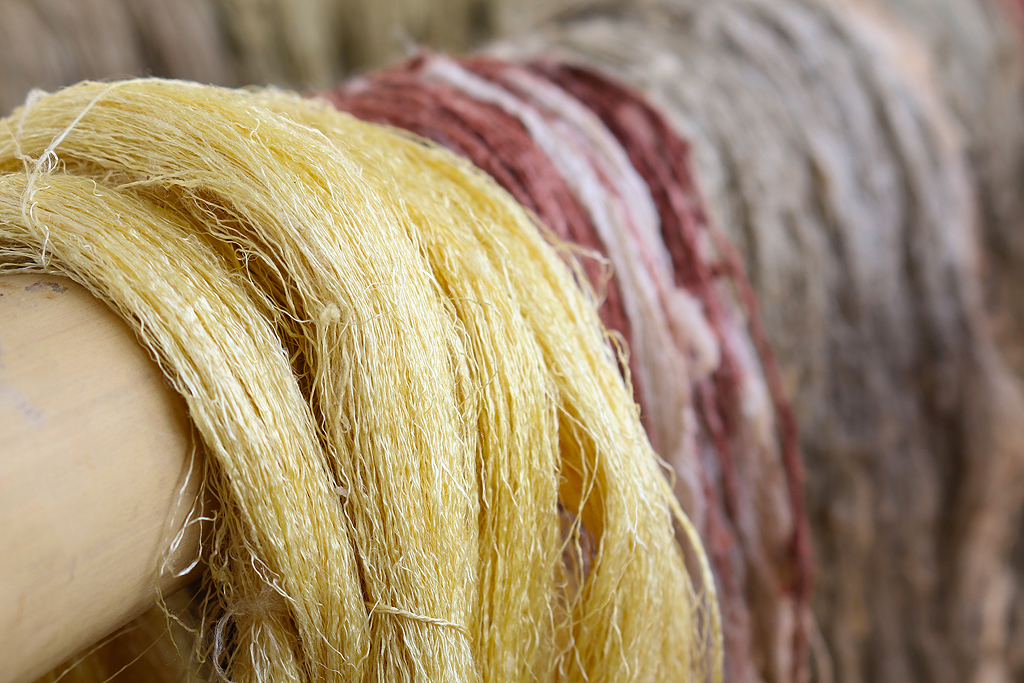Spread the love
Guwahati: Nestled in the bank of the mighty Brahmaputra the state of Assam is celebrated for its wild silk production.
Assam Silk signifies three major types of indigenous wild silks produced in Assam, golden Muga, white pat, and warm eri silk. Centered in Sualkuchi town the industry is an intensive one. The town is known as the Manchester of East India.
According to the data collected from the Ministry of Textiles, Assam is the third-largest milk-producing state in the country, having the potential for production of 3 varieties of silk mulberry, eri, and Muga which account for 15% of the country's total raw silk production.

There are as many as 9,500 sericulture villages producing MUGA, eri, and mulberry silk in the state of Assam, and Sualkuchi is the pivot of the industry.

Women play a significant role in these kinds of textile industries as such silk-producing activities are mostly home-based where 53% of them are involved in it. These practices emanated from the rural populace where weaving and silk production used to to a tradition.

The women, along with men have been actively participating in all the sectors of sericulture from on-farm activities to fabric creation, marketing, and consumption. Many schemes like Self Help Group, NIFT participation, Cluster Plantation, etc. have been implemented in the North-Eastern Council and several government bodies.
During the period 2011 to 2016, the state of Assam produced 587.47 metric tonnes of Muga silk and 106.82 metric tonnes of Pat mulberry silk. At the same time, the state produced 106.82 metric tonnes of mulberry domestic silk pat. Besides, the production of wooly white Eri silk found in the North-East region was 9,349.40 metric tonnes.
As a whole, during 2017-18, the state has witnessed the production of 4861 MT of mulberry, eri and muga silk.

The production of Muga Silk is primarily distributed in the districts of Kamrup, Goalpara, Udalguri, Kokrajhar, Tinsukia, Dibrugarh, Sibsagar, Jorhat, Golaghat, Lakhimpur & Dhemaji.
Eri silk is produced across the state, especially in Kamrup, Goalpara, Udalguri, Darang, Tinsukia, Dibrugarh, Sibsagar, Jorhat, Golaghat, Lakhimpur, Dhemaji, Nagaon, Morigaon, Darrang, Cachar, Karbi Anglong, N.C. Hills, Kokrajhar, and Dhubri districts.

The production of Mulberry silk has declined over the years and is restricted to Jorhat, Golaghat, Sibsagar, Darrang, etc.
The Silk Industry of Assam was highly affected by the prevalence of the Covid-19 pandemic. And this led the industry to suffer a loss of Rs 100 crore.
According to a report, over 20,000 weavers and workers of Sualkuchi, the hub of Assam’s silk industry, faced uncertainties due to the novel coronavirus pandemic and the nationwide lockdown to curb the spread of the virus.
The handloom owners were bound to stop their production after they failed to find a market to sell their products due to the ongoing lockdown.

In recent times the Government has taken various initiatives to improve the condition of individual Muga silkworm rearing plantations in the state. Some of the schemes which were launched by the Government were North East Region Textile Promotion Scheme (NERTPS) for Muga and Eri, identifying 'Aspirational Districts', 'Silk Samagra', and Rashtriya Krishi Vikas Yojana (RKVY) for Eri and others.
These initiatives are highly aimed at the holistic development of sericulture in all its spheres from plantation development to the production of fabrics with the value addition at every stage of the production chain.
Today in the advanced era one can easily find the traditional garments to order from various websites and applications as the local weavers and artisans of Sualkuchi are using digital platforms to promote their products globally.